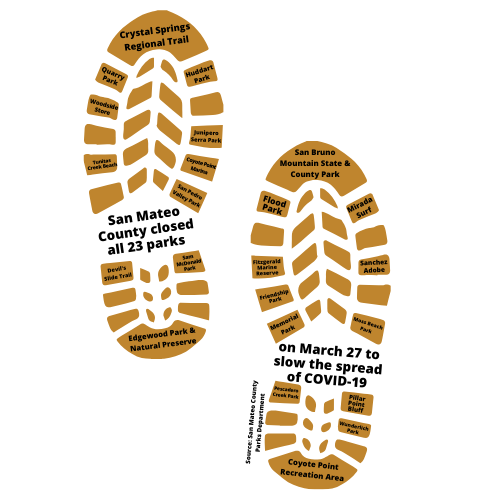

Every country, state and county has reacted differently to the coronavirus, some handling the pandemic better than others. Since California’s statewide shelter-in-place began in March, most people have been eager to use their newfound free time to explore the outdoors. However, parks and beaches have become overcrowded with people yearning to leave the house in the disguise of exercising, and therefore defeating the purpose of a shelter-in-place: to stop the spread of the coronavirus.
The first week the U.S. began to see an increase in cases of COVID-19, no one thought there was any reason to take big precautions because everyone assumed our country would take better control of the virus spreading than China. Things soon changed when California Gov. Gavin Newsom declared a health emergency, and the number of positive cases nationwide increased rapidly. Suddenly, actions for spread prevention began to take place: big gatherings were cancelled, people started working from home and schools were switched to remote teaching. What are citizens expected to do if everything is closed down and being with other people is dangerous?
Almost everyone is sick of being stuck at home, so they started looking for excuses to leave their houses. Many resorted to exercising at a park, beach or at a trail of some sort because they thought they were not risking their health. However, these parks and beaches ended up becoming incredibly overcrowded so that they were no longer a safe place for people to go.
Because of this happening, Newsom mandated all parking lots of parks and beaches to be closed to the public in hopes of reducing the amount of people going to these places; the more people are seperated, the less the virus will spread. In addition, with closed parking lots, the only people heading to these public areas would be locals, limiting the spread of the virus from city to city with potentially asymptomatic carriers.
Instead of driving to exercise next to an ocean view, people should go on walks or runs around the area they live in. In phase one of the shelter-in-place people were only allowed to leave within five miles from their house. Now in phase two, people are allowed to be ten miles from their house. Therefore, it only makes sense for people to do exercise within their neighborhood. It is a lot more work to drive somewhere to workout and then risk being contaminated or contaminating others.

People are advised to continue to follow social distancing, so it is recommended that they park somewhere else or come to the beaches and parks with another form of transportation, such as biking. However, some are now parking on main roads and places that are not meant for parking, creating dangerous situations.
Many people went to the coast during the first weekend of the statewide lockdown, because they have been stuck inside for so long. Although many were upset with the closure of the parking lots of beaches and parks, it was a necessary measure to ensure people were protecting themselves and others.
The Swayer Camp Trail, located in Hillsborough, was recently shut down because of how crowded it was. The trail is certainly not wide enough to follow the social distancing recommendation of six feet. The Sawyer Camp Trail is just one of many public areas that exhibit the risky situations people are putting themselves in.
Because of California’s early reaction to the coronavirus with a shelter-in-place order, the amount of cases are less than other states in the United States. Some counties still have no cases of the coronavirus while 13 other counties are starting to see a flattening curve. The extra precaution in California is the reason why we haven’t been intensely affected by this pandemic. The closure of parking lots for parks and beaches was beneficial since beaches are not essential.
Many people went to the coast during the first weekend of the statewide shelter in place, because they have been stuck inside for so long. Although many were upset with the closure of the parking lots of beaches and parks, it was necessary to maintain social distancing.





